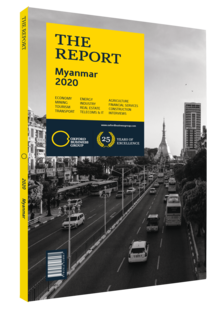Melvyn Pun, CEO, Yoma Strategic Holdings: Interview

Interview: Melvyn Pun
In what ways can the authorities encourage greater activity on the Yangon Stock Exchange?
MELVYN PUN: It is clear that the exchange still has a long way to develop. Foreign investors are now legally permitted to own local companies’ shares, and officials are working to develop and enable the trading and clearing systems that are needed to support such foreign investment in the near term.
We have yet to enunciate, however, why it is attractive to invest in companies on the exchange, nor have we made it sufficiently attractive for companies to list on it. Meanwhile, the lack of interest has led to inactivity and a muted performance. Our attention should now be focused on encouraging momentum in the market. Pricing is very low, so there are plenty of attractive opportunities for investment, but we must create more attractive assets – notably in the form of a bond market. Liquidity is also a problem, although many commentators suggest this is likely to be increased through the successful liberalisation of the insurance market and the expected influx of foreign capital.
A vibrant stock exchange is dependent on the accumulation of varied buyers and sellers. To that end, we must promote Myanmar further. Partnerships with regional exchanges can help boost the Yangon Stock Exchange. Another approach is to offer incentives such as preferential banking rates or tax breaks for listed companies. Currently, Myanmar’s over-the-counter market is more active than the bourse, as the latter is illiquid and provides few benefits. Therefore, incentives must be provided to encourage listing and investment, which will also support improvements to corporate governance structures. Furthermore, it is important to deepen enforcement mechanisms. By penalising unlisted public companies which do not have good governance structures in place, we can protect investors and enhance the attractiveness of the exchange.
How do you assess the efforts made in the private sector to increase financial inclusion?
PUN: Though it has been somewhat addressed by microfinance and mobile financial services, we are in the early stages of improving financial inclusion. Those most in need of financial services do not have what the formal financial system requires – they lack identity documentation and assets to enable credit extension. This means that banks are largely bypassed by the general public. To boost financial inclusion, we must look to a more risk-based approach, fostering a high-risk appetite compensated by high return. Regulation must also carefully consider how to balance consumer protection with financial inclusion. In the informal market denying high interest rates leads to more lending at exorbitant rates, hurting consumers. Lending has been a great business in Myanmar, and attractive returns are supported by extremely low default rates, particularly for consumer and microfinance loans.
What is the state of the middle class, and how does this affect the investment environment?
PUN: The middle class is small and growing fast, but it is challenging to get an exact population count. When we opened food and beverage outlets in second-tier cities they were successful, but their performance dropped dramatically in the face of competition. This tells us that there is wealth, but it is not deep. At around $1300, Myanmar has a much lower GDP per capita than the rest of region. This must double for the middle class to be significant. While the consumer and retail market is expected to grow, this will happen over the span of 30 years. Businesses should be cautious and not overextend. Interestingly, because there is such a long phase of growth ahead, the slower growth rate is not a problem. For our group, we would prefer a long and steady rate of growth, even if the rate itself is lower.
You have reached the limit of premium articles you can view for free.
Choose from the options below to purchase print or digital editions of our Reports. You can also purchase a website subscription giving you unlimited access to all of our Reports online for 12 months.
If you have already purchased this Report or have a website subscription, please login to continue.

